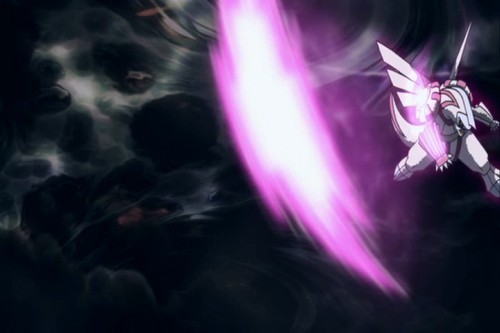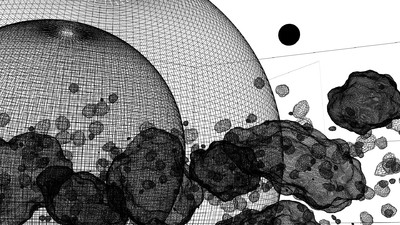Rendering Design Space pt.1
 Thursday, January 24, 2013 at 10:29PM
Thursday, January 24, 2013 at 10:29PM Understanding a game's design space is a way of grasping its potential gameplay. By organizing a game's interactive elements in a very structured way, we can gain great insight into how a game's meaningful interactions can emerge. Ultimately, design spaces are highly conceptual. After all, players don't play design spaces. Players play levels that typically only present a much smaller selection of elements from a game's design space. Playing in levels is where the gameplay actually happens, and it's where we look to begin analyzing a game's level design, balance, difficulty, and pacing. And it's this process of applying, actuating, or rending a game's design space that I want to focus on for this article series.
Imaging that you're making a turn-based strategy game called Unto Caesar and you've done a lot of work creating gameplay elements that are well-rounded. This means your mechanics, level elements, enemy elements, and perhaps power-ups are designed to take up unique parts of your design space without overlapping much in function. Well-rounded design is a great foundation to build balanced games with meaningful interactivity on. From this conceptual base, there are a few different directions you can take to design actual gameplay challenges and levels. This is a very important turning point in development (at least for this thought experiment). It's like in story design where the telling or execution of a story can bring coherency or confusion to the tale. For games, how you render your design space is one of the biggest factors in what your game is (gameplay) and how it conveys ideas and experiences.
Design Spatial Rend
One method for rendering a design space is to take your well-rounded mechanics and break them down, divide them into chunks, or otherwise rend them asunder. Depending on how you divide things, you can accentuate parts of your design space through gameplay, or you can practically destroy the meaning and balance of your gameplay. One of the most important aspects to maintain when designing levels is whether or not players can actually overcome the challenges and how. Put another way, we're looking for what mechanics players have and how they can be used. It's obviously a bad idea to design a Mario style platforming level in a game with no JUMP mechanic or suitable substitute. Final Fantasy 8 comes close to doing this at Ultimecia's Castle (see here). So let's consider more practical examples.
Complex games often dole out mechanics for the player to learn and master over time. Tutorial levels often do this to help isolate actions and explicitly teach players, which is a good thing. I wouldn't count this as dividing or rending a design space because the tutorial challenges are designed around the player having an incomplete set of abilities. It's when players are ill equipped that the level design begins to fall apart.
Level designers have to be very careful to maintain the integrity of core mechanics and core gameplay dynamics because these game elements are the key to what makes games interactive, skill-based, and variable. (Recall my series on interesting choices.) If a game relies on a small set of 3 core mechanics to sustain gameplay of interesting choices, creating levels that only allow the player to use one of these mechanics at a time reduces the game to a much more straightforward, less varied, and less interesting experience.
Imagine playing a fighting game like Street Fighter or Smash Brothers without the ability to grab. If you did, there'd be something seriously missing from the experience. In fact, there's a mode in Smash Melee called "single button melee" that I'm pretty sure I'm the only person in the world who likes it. Or what if you couldn't block in a fighting game? Or attack? Perhaps a better example would be playing a game with a broken controller. Every time you hit X, nothing happens. So you just have to learn not to use whatever mechanic X is mapped to. And when you're forced into a scenario where you have to hit X or lose, it's game over. Tough luck. In such an example you don't have access to the right mechanics for the job because of a mis-match between level design and player mechanics, the whole gameplay experience can feel less than normal.
If you're thinking that my examples are a bit farfetched, and that no designer would create a game and then arbitrarily pluck out key mechanics from the player, consider the following. We're talking about functional relationships here. To make games work you need player mechanics that interact with level elements. With the wrong type of either, the pairing doesn't work. So even if a developer doesn't remove key core mechanics from the player, it's possible that the levels or other player options can emerge into a situation where the player is ill-equipped for the task. Recall the conclusions from my series Emergence. Convergence. Linearity. Options or openness in gameplay design makes games harder to create, test, and tune. This openness can easily open the gameplay experience to the possibility of the player not having the right combination of abilities or the game not having conveyed the right information in a coherent way.
It can be odd not to have enough abilities to feel "normal" in a game. Upgrade Complete is a indie game that takes this idea to a satirical extreme. In this game you have to upgrade everything from the loading bars to the game menus. Likewise your ability to move and shoot in this shmup is hampered so that you have room to grow via upgrade. Forcing the player work for normalcy isn't usually a good way to design levels. While such level design may be great for creating a contrast between player weakness and player strength, the designer has the added challenge of tuning levels to clearly convey that the player can overcome some but not all challenges and how. In other words, clean feedback design is stressed.

To those who know, you know.
Games where players can upgrade or level up their abilities tend to have this problem of working for normalcy. In such a game, what is "normal" can be very hard to determine. At any point within most RPGs you can be under, at, or over leveled compared to your enemies. In Pokemon I played through most of the game underleveled because I could leverage my knowledge and strategies of the deep combat system. I did the same in Radiant Historia, Tales of Symphonia, and Mario & Luigi 3: Bowser's Inside Story. But in games like Ni No Kuni DS, Final Fantasy 6, or Chrono Trigger, I worked to be overleveled.
Challenge is important to me as a gameplay loving, games as art gamer. But with so many variables, options, and dynamic ways that the RPG systems in these games work, I cannot explain to you where the "normal" level is where the gameplay is finely tuned according to my abilities. Sure, I've found my sweet spot before inside of such design-space-time continuums. But I'm not so sure these games have sweet spots where the gameplay is especially well tuned. There are simply too many dynamic variable systems at work with too many options up to the player and insufficient feedback. In Super Mario Bros, you can beat any level as Small Mario. This is something the player never has to worry about. But in many RPGs, you may reach a challenge that you can't overcome simply because of the limitations of the systems combined with choices you've made that ripple forward.
In multiplayer games with upgrades and leveling up, what is normal becomes the maximum level. This means players must do a lot of work just to begin competing on "fair" conditions gameplay wise. Call of Duty's multiplayer popularized multiplayer leveling up in shooters, but this kind of thing has been going on for years with games like Pokemon. Even when i was back in middle school battling in Pokemon Red, everyone knew to train up level 100 Pokemon to battle. In many ways, because players have the option to level up their Pokemon, the game allows for a team of lv.100 Pokemon to battle a team of lv.40 Pokemon. Such a battle wouldn't be a well tuned experience of interesting choices for both sides. While I'm perfectly aware that there are some viable strategies that utilize level 1 Pokemon in competitive battling (see here), for the vast majority of cases, real competition and real gameplay doesn't exist until the Pokemon are near equal level within their tiers.
A recent example of a well-rouned, finely tuned design space that was broken up is Halo 4, where some multiplayer abilities have been hampered compared to previous versions of Halo. Instead of going into battle with carefully tuned grenade strength, movement speed, melee strength, and weapons where everyone starts with the same abilities, Halo 4 features custom loadouts. These loadouts give player access to increase their abilities with perks. So to balance out some of these perks, the default abilities were weakened. For my first few hours of play, I wondered why my grenades were so weak. Then I realized that I needed to select the "explosives" perk. While Halo may still be balanced despite these changes, from what I've played and what I hear the game is suffering from such a broken up design space.
Dividing up a well-rounded design space to dole it out to the player over time is a questionable enough path to take design wise. But then allowing players to further stretch the design space with perks that augment their abilities beyond the normal levels adds other kinds of gameplay balance problems.
In part 2, we'll look at how classes and roles break up a design space to create various specializations, playstyles, and matchups.



Reader Comments (4)
funny, I had a completely different experience with Radiant Historia. I ended up getting stuck in both timelines to 2 bosses that I thought were impossible to beat unless I started grinding or hoarding up on items.
One was with a Thaumachine with 4 exploding mines. The mines were so strong that 1 alone could KO me and it was common for me to die after just 1 turn. I was unable to take them out in time because even with Rosch's special that could attack all enemies based on row or column, he wasn't strong enough to destroy them so the mines would just wipe my guys out.
The second was even more hopeless because it was Stocke by himself against Garland. He often buffed himself and attacked multiple times taking off more HP than I could get back even with a greater heal.
I eventually said fuck this and just stopped playing.
@ Steve Johnathan
Interesting. I wonder if there were some strategic options there that you didn't try. Or I wonder if you were just too underleveled. Hard to say. I'd like to give it a try from your file, but that's probably impossible to do at this point.
What strategy did you use to win that fight?
@Steve
I think I carefully used the DEFEND mechanic and used some items to temporarily buff me.